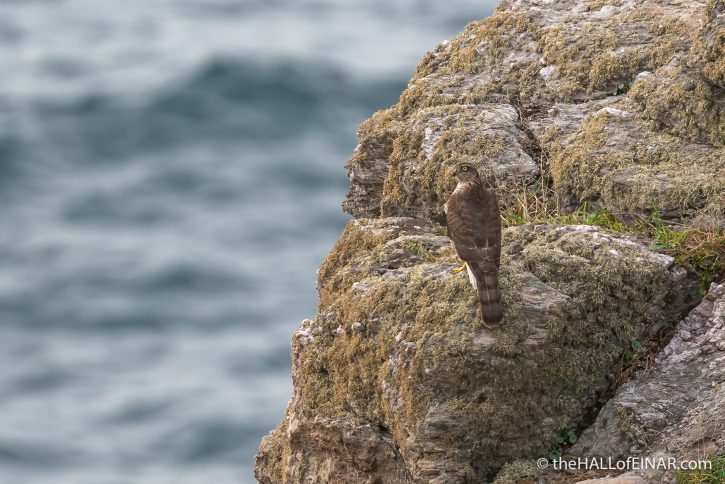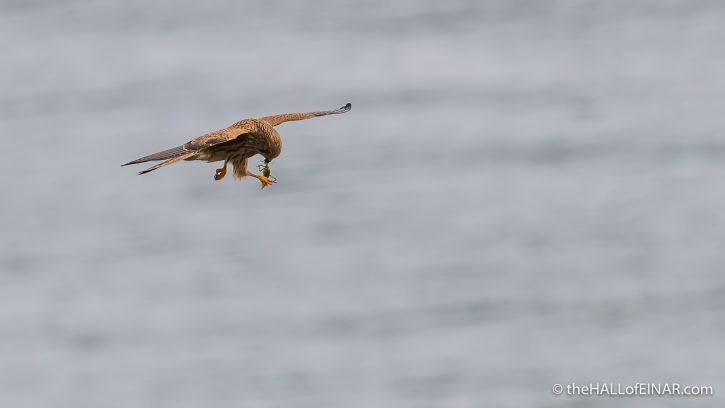An early Start Point
I’ve been to Start Point before. I came here with my son one morning, very early, and took photographs in the fog.
This time it’s later in the day. As we arrive a Sparrowhawk flies over our shoulders and lands on the rocks above the sea.

There are distant Common Buzzards gliding in ever-higher circles high over the headland. Nearby, a Common Kestrel flies past fast:

They’re such beautiful birds. Their scientific name is Falco tinnunculus. Falco means sickle.

I can see it hovering over the grassy slopes. I’m not sure there are many mice and voles here. In Orkney they are called Moosiehaaks.

It plunges onto the ground and then rises again with a cricket in its talons.

Then, just like the Lesser Kestrels we’ve seen in Italy, it eats it on the wing.
From the car park we can see the village of Hallsands half-way down the cliffs. It was abandoned when I first visited it. Hallsands was a thriving community in the 1890s, with numerous houses and a chapel. The Admiralty made the decision to expand the naval dockyard at Keyham and gave a contract to dredge shingle from the coast. The beach level fell by between seven and twelve feet and, in one storm in 1917, most of the village was washed away.

The Government commissioned a report which was never published, because it said the disaster was due to the dredging. The villagers lost everything they had.
As we pack up to leave, a familiar looking plane appears. It’s a Spitfire. I know there’s been one over Exeter recently with ‘Thank you NHS’ under its wings. This has the same insignia.

What an incredible machine.